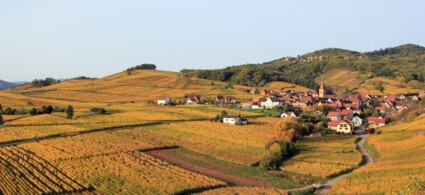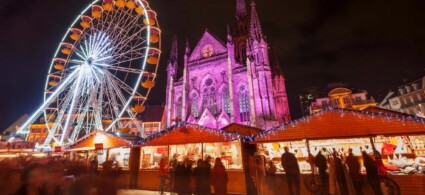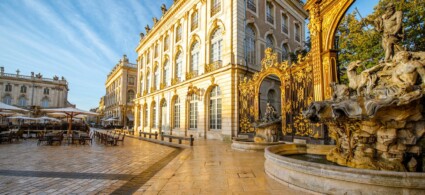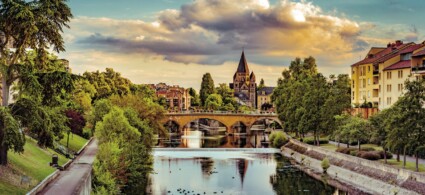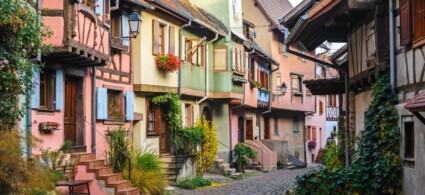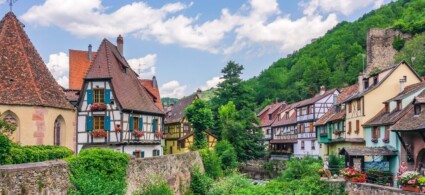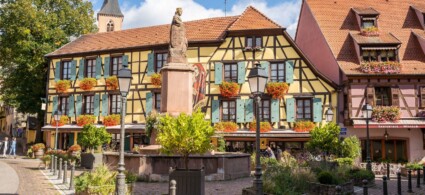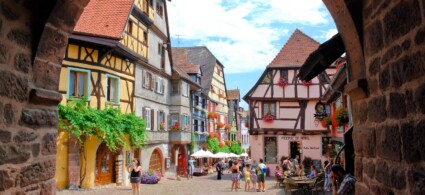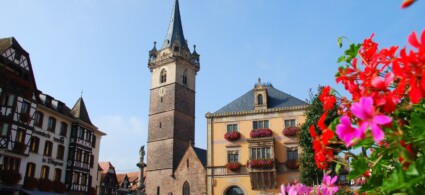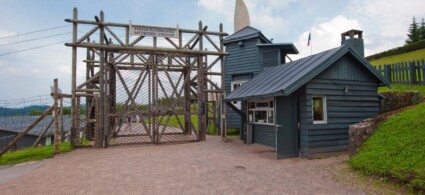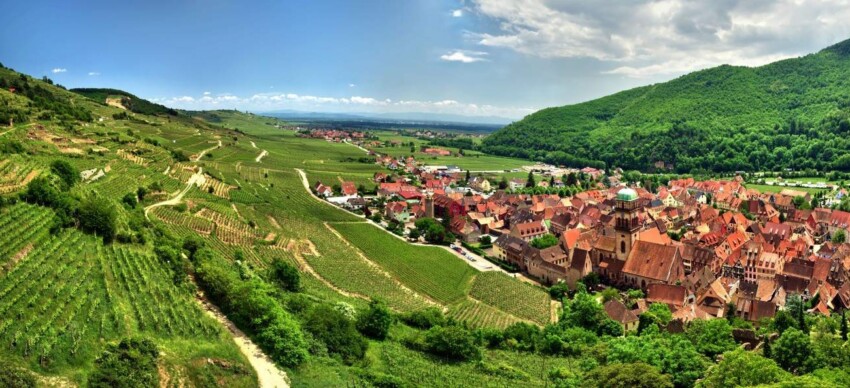

Amidst the endless rows of vineyards, Alsace-Lorraine amazes travellers with its unmistakable characteristics: the many villages with half-timbered houses in soft pastel colours and covered with flowering geraniums, the storks’ nests on the roofs of the buildings, the cities rich in art and history.

The capital of Alsace is undoubtedly Strasbourg, a city with two souls, two cultures and two diametrically opposed aspects: French heart and German past, modernity and tradition. While Strasbourg is open to different cultures and proves to be a cosmopolitan city, thanks to the presence of European Union institutions such as the European Parliament, it also retains its strongly Alsatian traditionalist character, which can be admired in its charming historic centre overlooking the canals.
In fact, the heart of Strasbourg looks like something out of a painting: Petit France, the most charming quarter of the old town, has been declared a UNESCO World Heritage Site. Picture-postcard corners await you: charming half-timbered houses and cobbled streets along the canals. Not to mention its imposing Gothic cathedral, towering over the streets of the centre with its 142-metre-high Gothic spire.

Situated at the foot of the Vosges Massif, Colmar is one of Alsace’s most atmospheric and ancient towns: it has a perfectly preserved medieval town centre.
What makes Colmar a precious jewel are its countless half-timbered houses, typical of this region, the guild quarters, some marvellous examples of Gothic and Renaissance art, but above all the Petite Venice, where the colourful colombages are reflected in the water of the canals. Between bridges, pink sandstone palaces, sloping-roofed buildings and navigable canals, it feels as if you have been catapulted into a children’s storybook.
The atmosphere becomes even more magical and fairytale-like during the Christmas Market period when the entire city and every single façade is festively decorated and lit up.
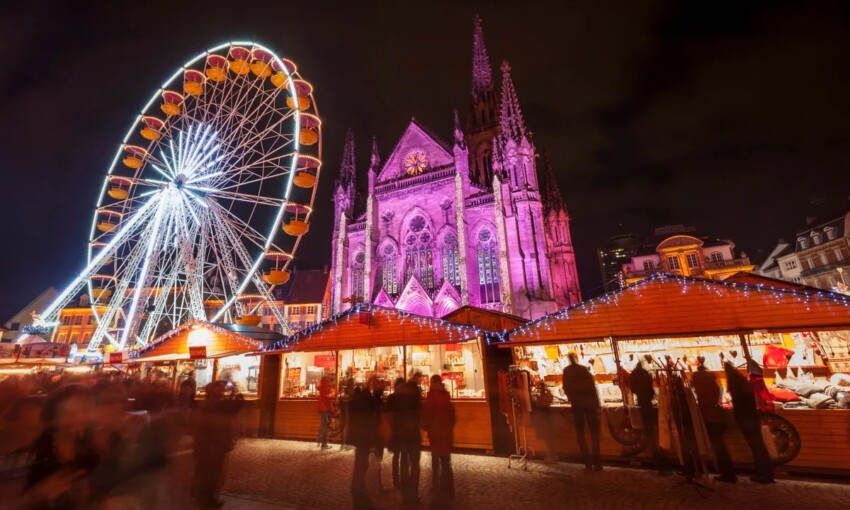
Also called the city of museums, Mulhouse is an unexpected discovery. Slightly off the tourist routes, this city with an intense industrial past in the textile sector boasts a particularly rich and evocative historical centre.
It also offers its visitors a plurality of fine museums: from the National Automobile Museum, which houses hundreds of historical models to the French Train Museum, which collects locomotives and wagons from all over the country; from the Electropolis Museum on electricity and its evolution to the Wallpaper and Fabric Printing Museum.

Would you like to visit the land of fairy tales? There is one in Alsace: it is located just 15 minutes from Colmar. It is called Riquewihr and is a tiny village with no more than 1,000 inhabitants. Voted one of the most beautiful villages in France, it enchants its visitors with its many half-timbered houses in soft pastel colours, perfectly preserved medieval buildings and flower-covered balconies.
A village so delightful that it inspired Japanese director Hayao Miyazaki for the Wandering Castle of Howl and Disney illustrators for the settings of the animated feature Beauty and the Beast.
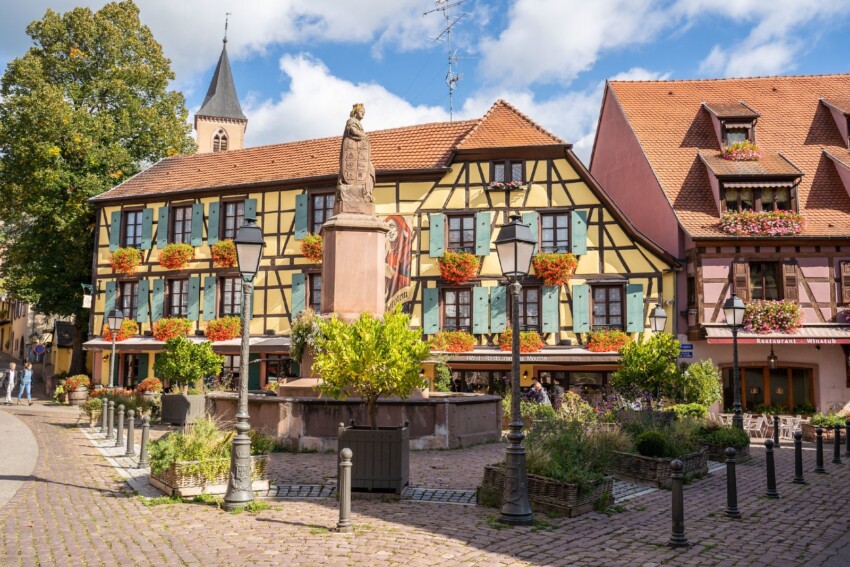
Ribeauvillé is another Alsatian gem: it is a charming village that has kept its original appearance intact, with narrow streets lined with half-timbered buildings and picturesque squares.
In the Middle Ages, it was the town of minstrels and troubadours, and even today in September there is a festival that recalls its ancient past, the Minstrel Festival. Its Christmas markets are also medieval-themed and take you back in time. In addition, Ribeauvillé is famous for its Pinot Grigio and Pinot Noir wine production.
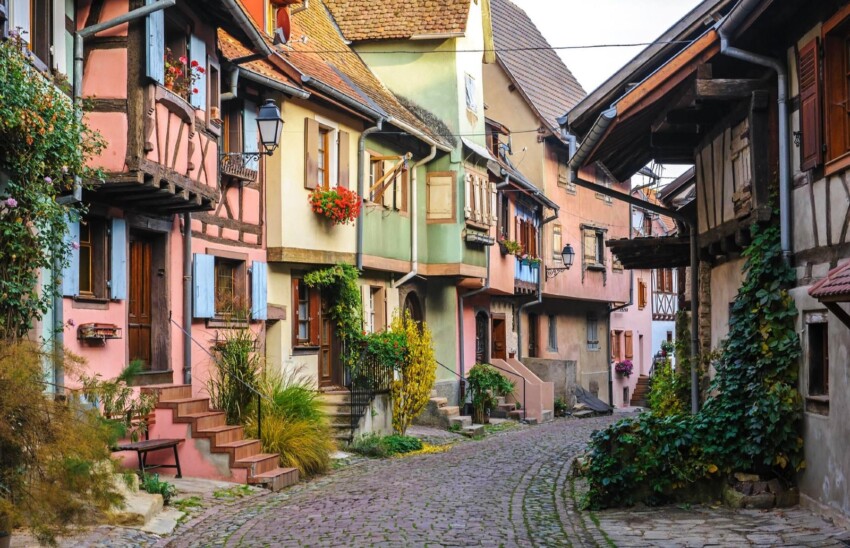
Eguisheim is one of the most beautiful villages in France and is only 7 kilometres from Colmar.
Although the village is really tiny, it is able to enchant visitors with its perfectly intact double medieval walls: in fact, its streets are all concentric and develop around the Château Saint-Léon. Ancient, evocative and delightful.
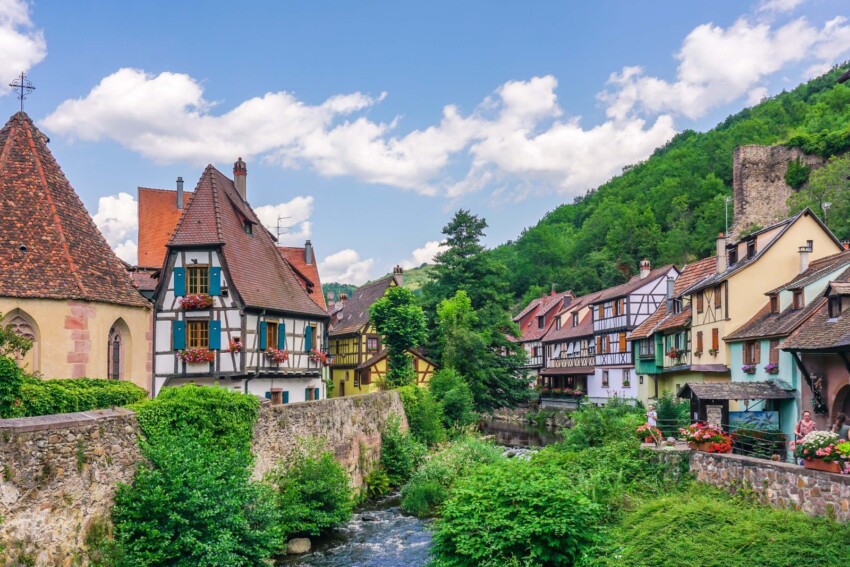
A beautiful town on the Wine Route, Kaysersberg surprises with the charm of its mediaeval buildings around the church of St. Croix and the fortified bridge dominated by the imperial castle. Its strategic location awakens memories of the ancient Roman road that connected Alsace to Lorraine.
Kaysersberg is considered one of the most charming towns in Alsace, with its cobbled streets and half-timbered houses in a thousand pastel colours.

Hunawihr is also called the village of storks: over 100 storks nest here in the wild, living mainly in the area managed by the Centre de Reintroduction de Cigognes. A visit to this park will impress you with the beauty of these wonderful creatures and is especially recommended for those travelling with children and young people.
The village is nestled in a bucolic landscape of vineyards as far as the eye can see and impresses with its picturesque fortified church that stands on a hill just outside the centre, surrounded by a hexagonal wall.
Butterfly lovers, on the other hand, can visit the Jardins des Papillons, where you can stroll among magnificent exotic butterflies in the wild.

This jewel of medieval architecture towers over the surrounding area from the top of a wooded promontory.
The castle of Haut Koenigsbourg is in fact perched on a rocky ridge and offers its visitors an exceptional view over the valley. Built of red sandstone, the castle was of great strategic importance: it served to guard and protect the wine and grain routes to the north and the silver and salt routes to the west.
Largely destroyed after a long siege by the Swedes in the Thirty Years’ War, it was almost entirely rebuilt byEmperor Wilhelm II with the aim of turning it into a museum and turning it into the symbol of Alsace’s return to Germany.

One of the natural wonders of Alsace is the Vosges Natural Park, 3000 m2 of lakes of glacial origin surrounded by magnificent forests and delightful pastures.
A true paradise for hikers, who will find a network of marked trails covering some 10,000 km. There are also plenty of trails for cyclists, launch points for hang-gliding enthusiasts and many ski slopes for the winter months.
Also not to be missed is La Vallée du Munster, a lush valley full of charming villages, dense forests, lakes and trails, and the Route des Cretes, a road built during World War I for supplies, which provides wonderful views of the area.

The city of Metz is located in the north-east of France and has a 2000-year history. Its architecture with French and German influences dates back to antiquity: you can take a journey through time between the imperial quarter, a UNESCO World Heritage Site, the medieval streets and the imposing Centre Pompidou-Metz, a diamond of French contemporary art, which develops an original, large-scale programme every year.
Its most famous monument is undoubtedly the Saint-Saint-Étienne Cathedral, one of the tallest churches in France, a marvellous Gothic jewel embellished with immense stained glass windows.

Thanks to a rich past, the former capital of the Duchy of Lorraine today possesses a sumptuous architectural heritage and can be considered one of the most beautiful cities in Europe. With its narrow streets, cobblestones and medieval fortified architecture, the historic centre of Nancy is simply enchanting.
Situated in the centre, Place Stanislas is undoubtedly one of the most beautiful royal squares in Europe, an 18th-century architectural jewel with finely worked doors embellished with gold, the work of blacksmith Jean Lamour.

The Château de Lunéville is a beautiful manor inspired by Louis XIV’s palace, built in 1702 at the behest of Léopold 1st, the Duke of Lorraine.
It is a grand residence, both elegant and sober, one of the greatest architectural and landscape complexes of the 18th century.

The construction of the citadel of Montmédy dates back to the 16th century, when the town was part of the Spanish Netherlands and was besieged by the troops of Louis XIV.
It became French in 1659 and it was the famous designer Vauban who carried out major modifications for defence reasons, including the circuit of the mighty ramparts overlooking the valley.

With its Belle Époque architecture typical of 18th century spa towns, its casino, racecourse and golf course, the town has retained this retro atmosphere that immediately seduces its visitors. Enjoy the rejuvenating benefits of the Vittel Spa’s thermal waters in a seductive and comfortable setting.

Amidst vast protected spaces and countryside, you will discover the beautiful balance of this silent and harmonious land. With forests, rivers, lakes, orchards, meadows and a rich architectural heritage, the Lorraine Regional Nature Park offers an authentic experience in contact with nature.
From one village to another, you can observe the wonders of its biodiversity and landscapes, meet the locals and discover a taste for authenticity. Don’t miss Hattonchâtel and its beautiful old buildings, Viéville-sous-les-Côtes and its 18th-century architecture, Arnaville, a charming medieval wine-growing village, Bayonville-sur-Mad and its fortified cemetery, and Prény, an ancient medieval town with a magnificent castle of the Dukes of Lorraine.
All that remains is to choose how to get around: on foot, by bicycle or by water via barges and boats. With an area of 219,400 hectares, there are in fact 340 ponds, 500 kilometres of signposted paths, around 200 species of birds, many of which are migratory, and many navigable waterways.

In the heart of the Meuse department, since 1997, six forest villages have invited contemporary artists to develop creative works related to the region. During their stay, the artists work in the forest and collaborate with volunteers and local craftsmen in the realisation of their unique and memorable creations, which are developed along nature trails.
Thanks to these sojourns, more than 200 works have seen the light of day and most can now be found along the 45 kilometres of forest trails in the area.

Verdun has become a symbol of the Great War, due to the intensity and duration of the fighting that took place in its countryside. The battlefield, a lunar landscape of 17,000 hectares, constitutes a unique repository of memories and vestiges of this terrible war.
Visit the Memorial, completely renovated with an exceptional museography, the Douaumont Ossuary, an imposing building housing the unidentified remains of 130,000 men, the forts of Douaumont and Vaux, and the trenches.
The quiet village of Grand, surrounded by Vosges forests, was once a vast Gallic-Roman settlement of over 70 hectares.
Today you can visit the amphitheatre, one of the most important monuments of the Roman Empire, with 17,000 seats, its vast mosaic, with an incredible extension of 232 square metres, one of the largest in Europe, as well as the remains of the bastion that protected the public buildings.
In the following map you can see the location of the main places of interest mentioned in this article.


